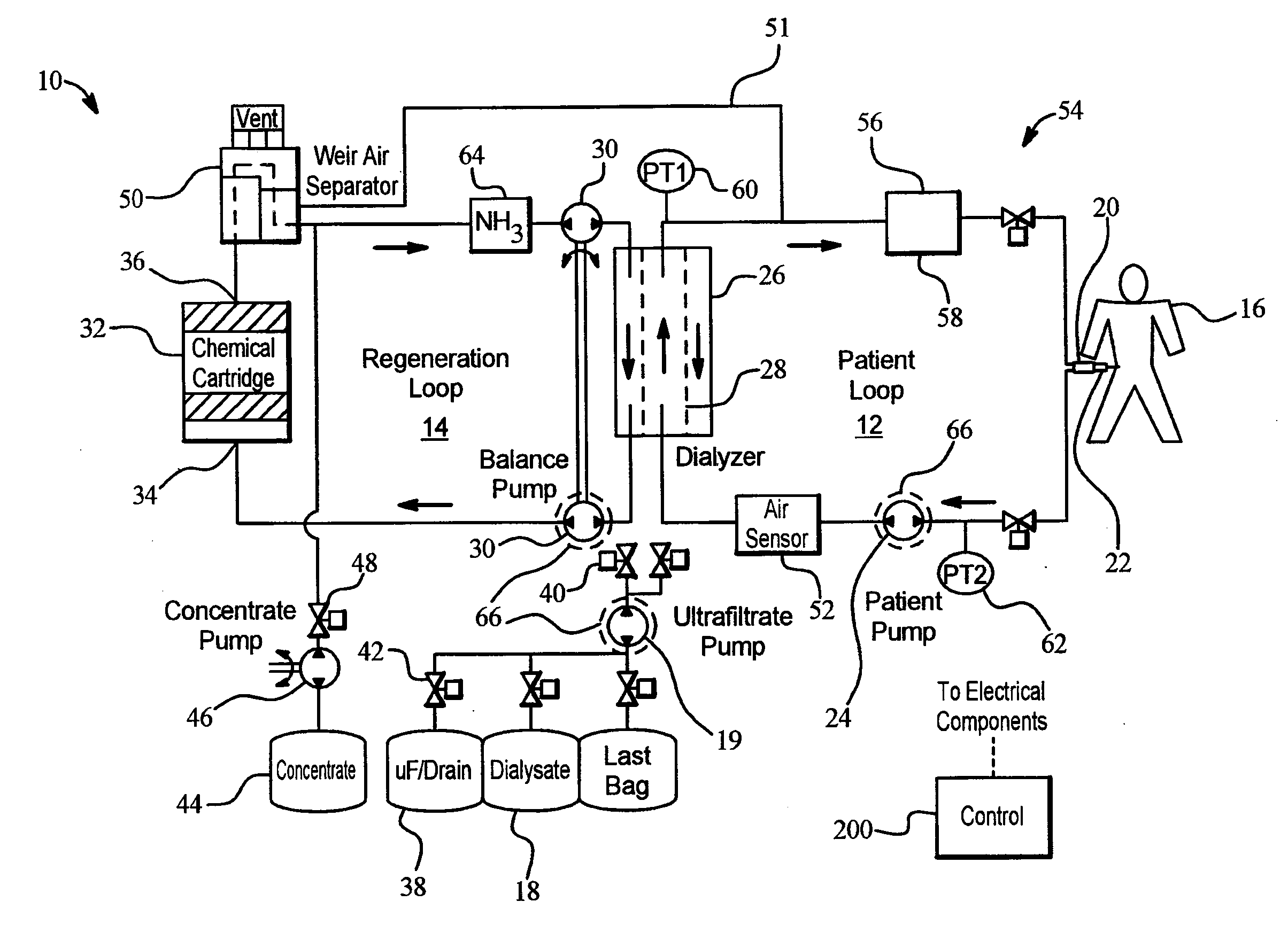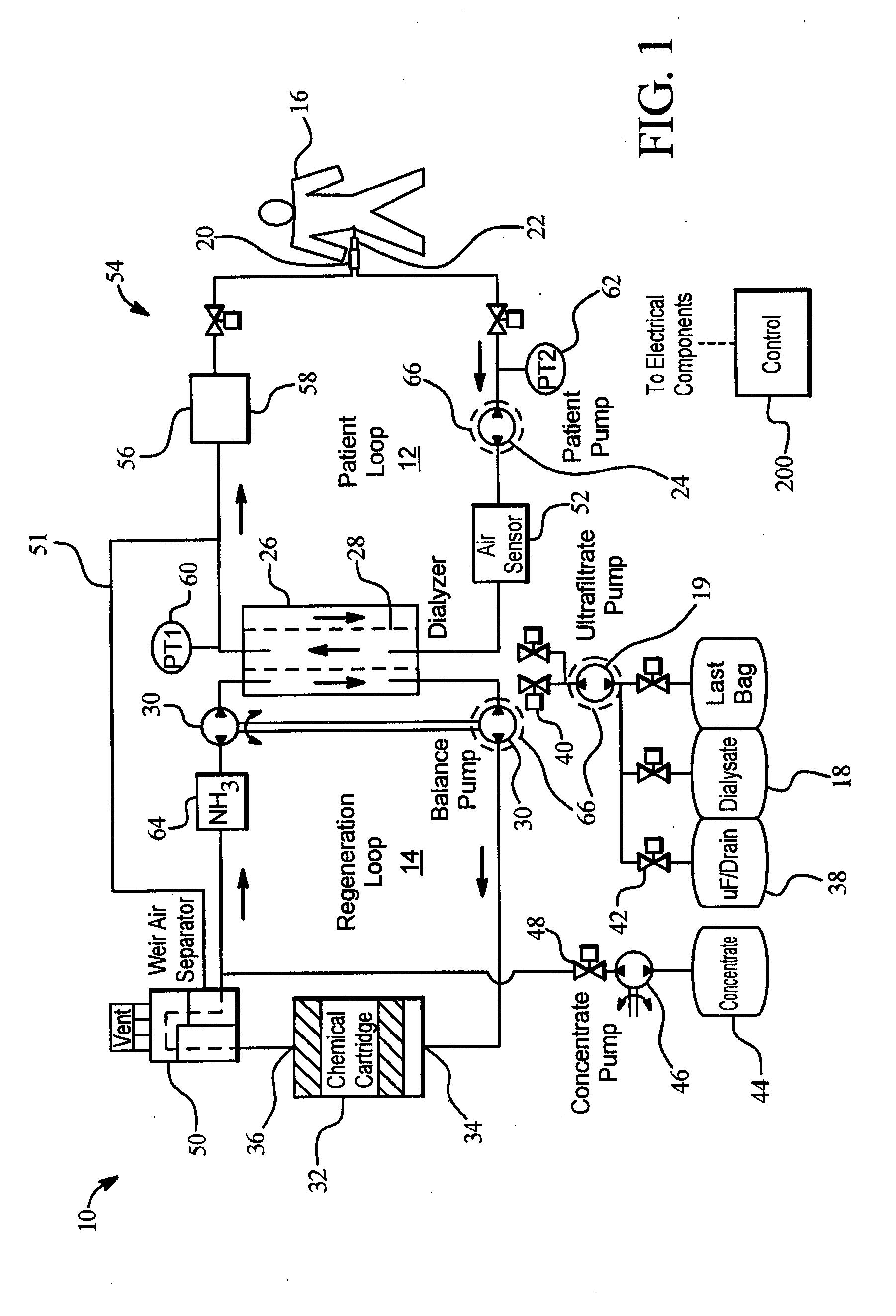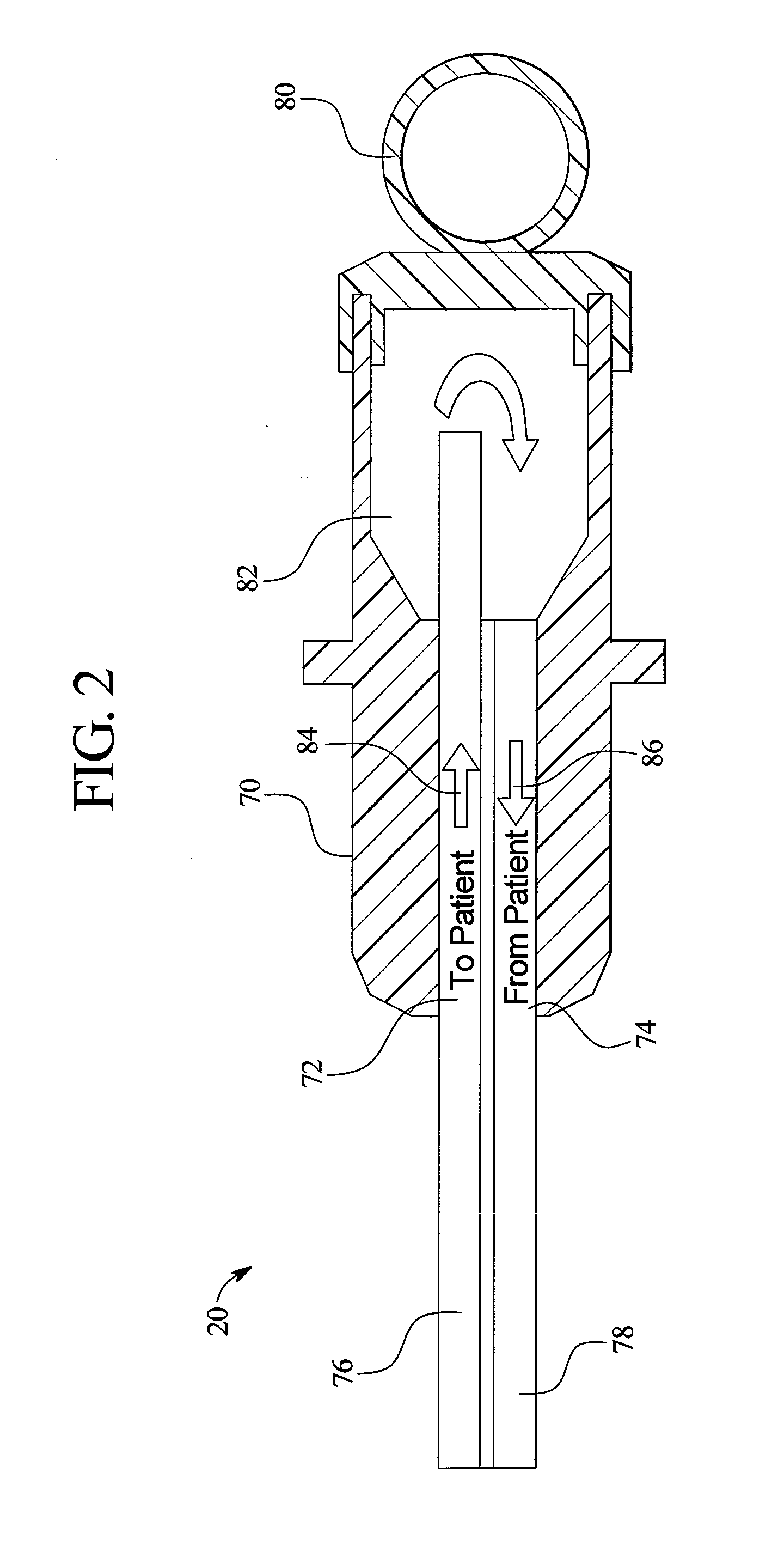Weight/sensor-controlled sorbent system for hemodialysis
a sorbent system and sensor technology, applied in the field of dialysis systems, can solve the problems of inability to balance water, minerals and excretion of daily metabolic load, inability to excrete daily metabolic load, and inability to achieve the balance of water, minerals and excretion, etc., to achieve the effect of improving the system and method of dialysis and improving the quality of li
- Summary
- Abstract
- Description
- Claims
- Application Information
AI Technical Summary
Benefits of technology
Problems solved by technology
Method used
Image
Examples
Embodiment Construction
Generally, the present invention relates to dialysis systems and methods of performing dialysis. In an embodiment, the present invention pertains to continuous flow regeneration peritoneal dialysis systems and methods. In other embodiments the present invention pertains to non-continuous flow regeneration peritoneal dialysis, and regeneration hemodialysis, both continuous and non-continuous flow.
The dialysis system automatically performs dialysis therapy on a patient, for example during nighttime while the patient sleeps. The present invention can provide true continuous flow dialysis therapy (fluid simultaneously flowing into and out of the patient), and automatically regenerate spent dialysate into fresh dialysate that is again used for the dialysis treatment. Continuous flow of dialysate tends to increase the efficacy of treatment by maximizing or maintaining a maximum osmotic gradient across the peritoneal membrane. Regeneration of dialysate by the present invention significantl...
PUM
 Login to View More
Login to View More Abstract
Description
Claims
Application Information
 Login to View More
Login to View More - R&D
- Intellectual Property
- Life Sciences
- Materials
- Tech Scout
- Unparalleled Data Quality
- Higher Quality Content
- 60% Fewer Hallucinations
Browse by: Latest US Patents, China's latest patents, Technical Efficacy Thesaurus, Application Domain, Technology Topic, Popular Technical Reports.
© 2025 PatSnap. All rights reserved.Legal|Privacy policy|Modern Slavery Act Transparency Statement|Sitemap|About US| Contact US: help@patsnap.com



